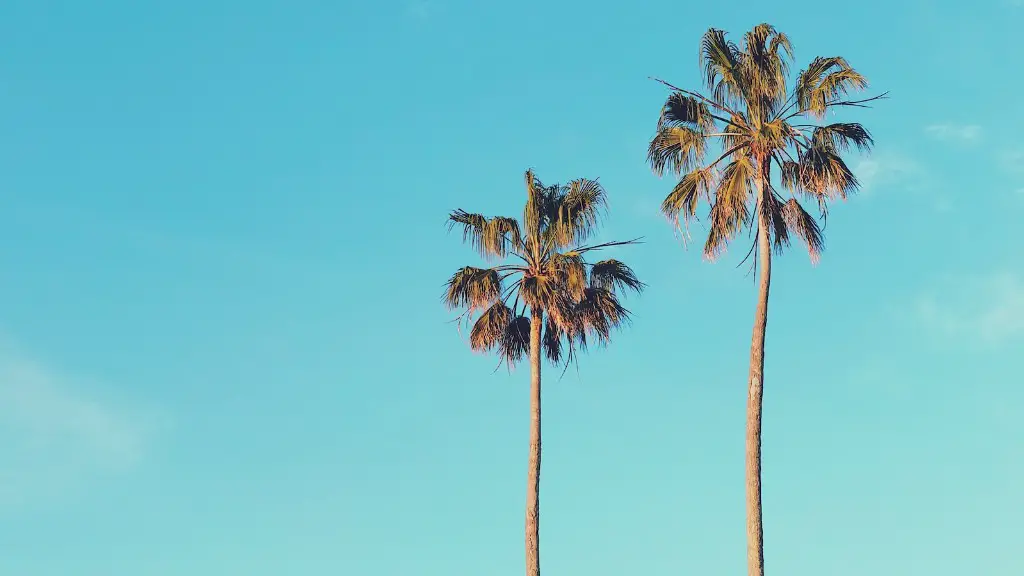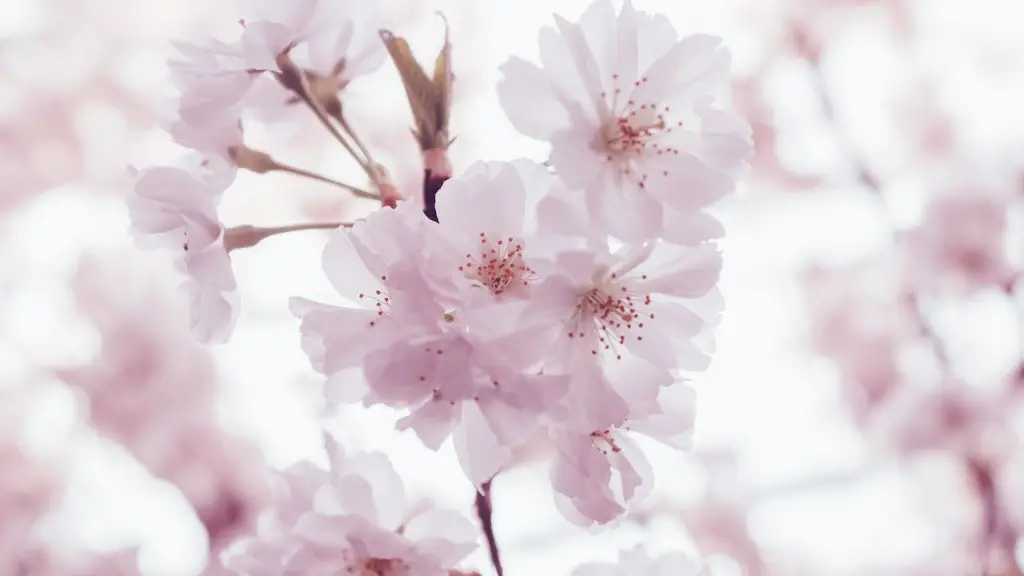Potted palm trees are a common sight in many homes and office buildings, lending a touch of the tropics to indoor spaces. While palm trees are generally drought-tolerant, those that are grown in containers need regular watering to prevent them from becoming stressed. How often to water a potted palm tree depends on the tree’s size, the type of potting mix used, and the temperature and humidity of the room.
A potted palm tree should be watered at least once a week.
Do potted palm trees need lots of water?
Water is essential for the growth and development of most plants, regardless of their potting situation. Whether the plant is indoors or outdoors, it needs to be watered frequently to keep it thriving. The same applies to palm trees; they thrive best in moist soil with plenty of water.
If you’re watering palms in garden beds or containers, it’s a good idea to use the finger-test to check the soil to a depth of at least a couple inches each time before you water. This way, you’ll develop a feel for when water is needed. If the soil is dry, provide water. If the soil is moist, no watering is needed.
How do you water a potted palm tree
Water your container plants deeply and thoroughly to promote healthy root growth. Plants that are exposed to sun and wind in outdoor containers dry out faster than plants in the ground; they may need daily summer watering.
When you are planting a palm in your garden, it is important to water the tree frequently during the first few weeks. After the first week, you can water the palm every other day. After that, you can water it two or three times a week.
What does an overwatered palm look like?
Overwatering is a common problem when it comes to palm trees. There are a few key signs to look out for that will indicate if your palm tree is being overwatered. These signs include: drooping leaves, black spots on leaves and stems, mold on the surface of the soil, and yellowing leaves. If you see any of these signs, it’s important to cut back on the amount of water you’re giving your palm tree. Otherwise, you risk damaging or even killing the tree.
Although palm plants are relatively low maintenance, they do require a certain level of care to thrive:
-Avoid direct sun: Full, direct sunlight can burn the leaves of your palm and cause curling or brown leaf tips.
-Be wary of pests: Keep the soil moist and prune occasionally to prevent pests from infesting your palm.
-Use fertilizer: Use a high-quality fertilizer specifically designed for palm plants to ensure optimal growth and health.
How many minutes should I water my palm tree?
If you are having trouble watering your palm tree, another option is to slow drip 20 gallons of water over the course of 1-2 hours. This will help ensure that the water is getting to the roots of the tree and help it to stay hydrated.
Palms are a type of plant that is tolerant of shade and may actually prefer it to direct sunlight. Low-light palm species in particular prefer bright indirect light but can also tolerate less light, especially during the winter months. If a palm is receiving too much direct sunlight, it may start to fail to thrive.
Do palm plants like to be misted
If you want to keep your palm happy, mist it a couple of times a week or add a humidifier nearby. If the humidity drops too low, particularly during winter, the fronds can start to crisp and die.
Brown tipped leaves may just be stressed and with proper diagnosis and care, they can recover. However, trimming leaves that are fully brown, dead, or dying is acceptable. As with any tree, you never want to trim too many leaves at one time to avoid over-stressing the tree.
Do palm trees need big pots?
When choosing a pot for your majesty palm, it is important to choose one that is 2-3 inches larger than the root ball. This will allow the plant to have enough room to grow without becoming rootbound. A pot that is too large may hold too much water and you risk over-watering your plant.
While most palm trees thrive in the landscape, there are also quite a few species that are suitable to container gardening. Generally speaking, if you want to grow a palm in a container, select species that are either slow-growing or low-growing which should be able to remain in the same container for 2-4 years.
What does a sick palm tree look like
If you see that the top center stalks of your palm tree are turning brown and/or shriveling, this is a sign that your tree is not healthy. Browning and shriveling of the stalk is often the first sign of illness in a palm tree, so it is important to keep an eye on this area for any changes. If you notice any browning or shriveling, you should consult a professional to assess the health of your tree and determine the best course of action.
Carotenemia is a condition that can cause the skin to turn a yellowish-orange color. It is caused by the prolonged intake of foods rich in carotene.
Why do palm tree leaves turn yellow?
If your palm tree’s leaves are turning yellow, it could be a sign that the tree is lacking essential nutrients. Make sure to check the tree’s soil for nutrients like nitrogen, manganese or magnesium. Alternatively, a pest or fungus could be causing the leaves to yellow.
If you see browning leaves on your plant, you can determine if it is underwatered or overwatered by feeling the leaf. If the leaf feels crispy and light, it is underwatered. If the leaf feels soft and limp, it is overwatered.
Conclusion
A potted palm tree should be watered every 7 to 10 days.
Based on the type of palm tree, they can generally withstand long periods of drought; however, they will begin to lose their luster and eventually die if they do not have enough water. It is recommended to water a potted palm tree every one to two weeks, or when the top inch of soil feels dry.



